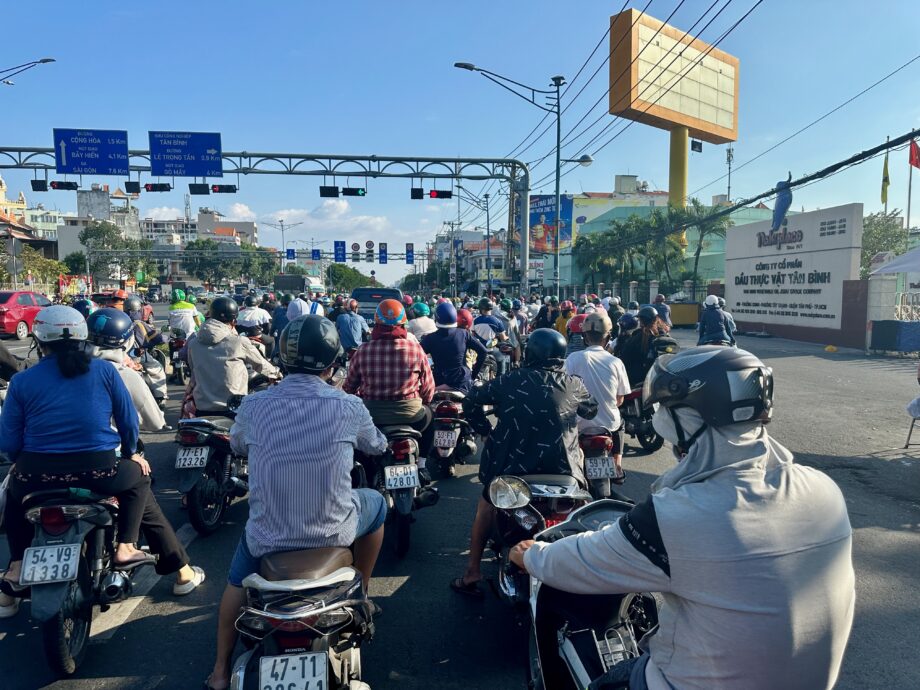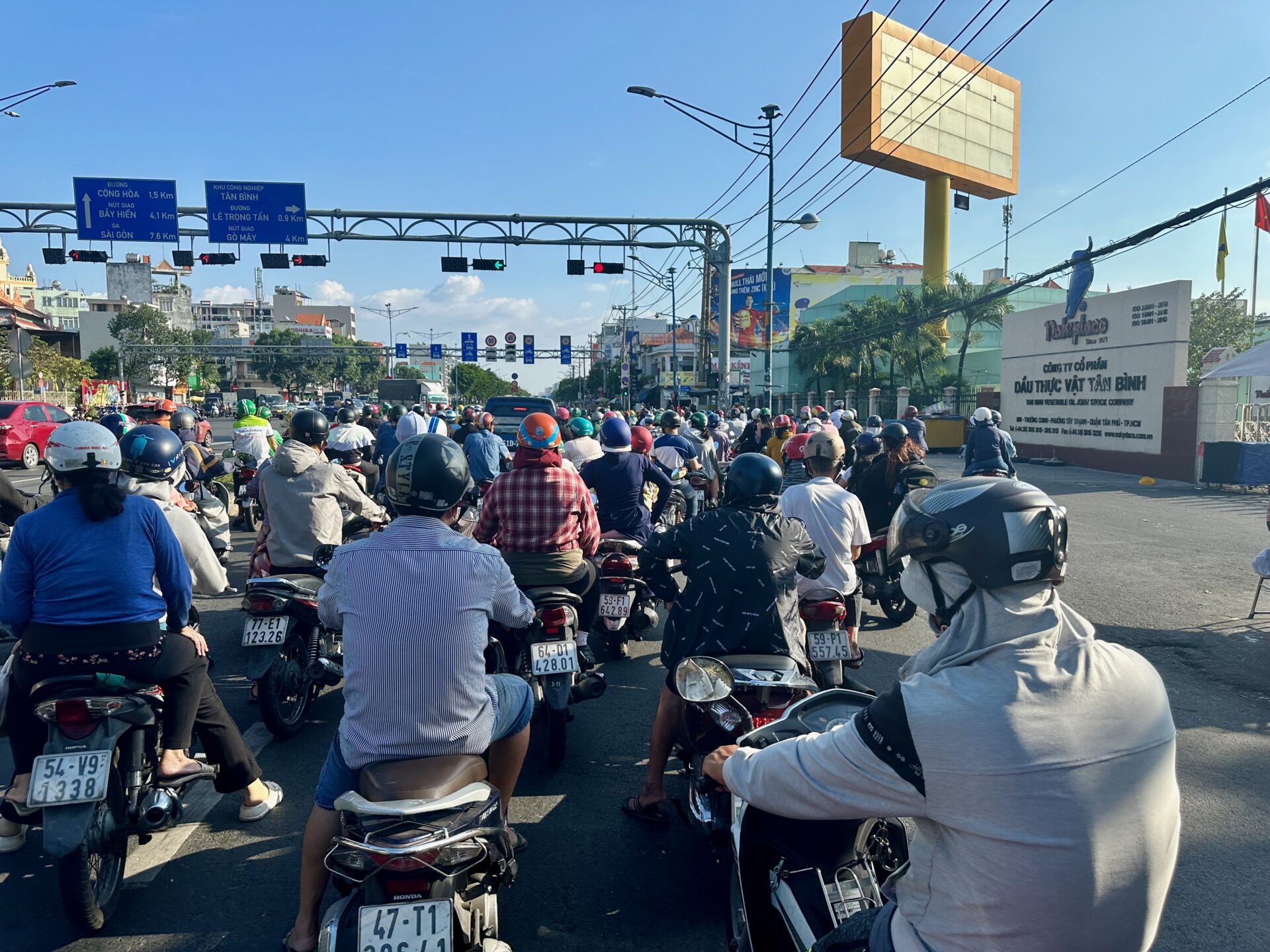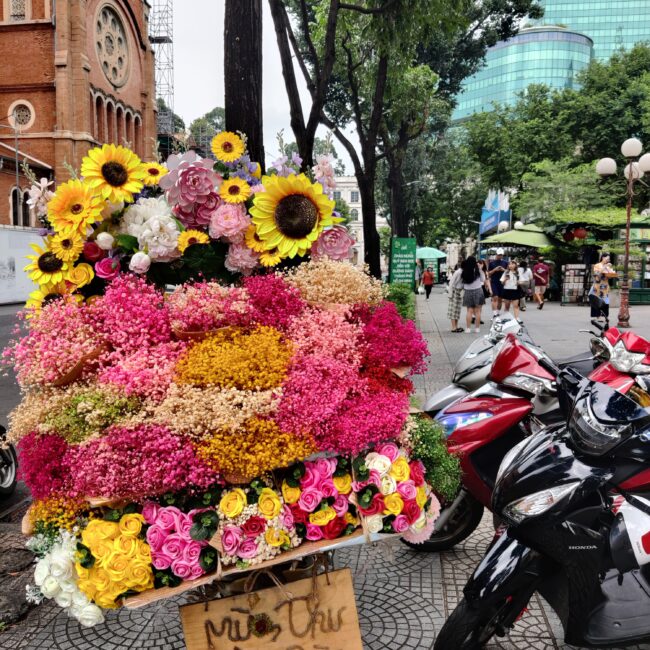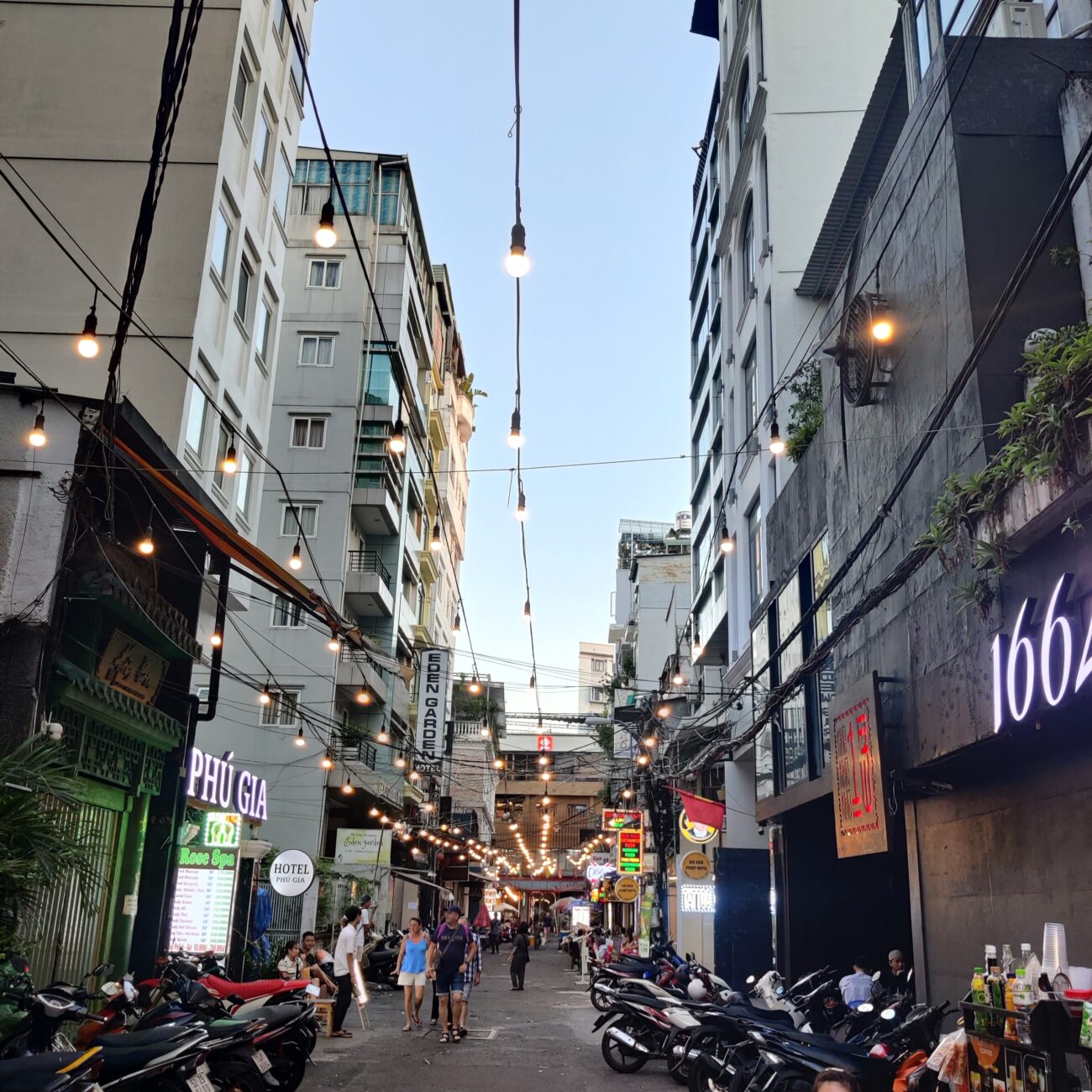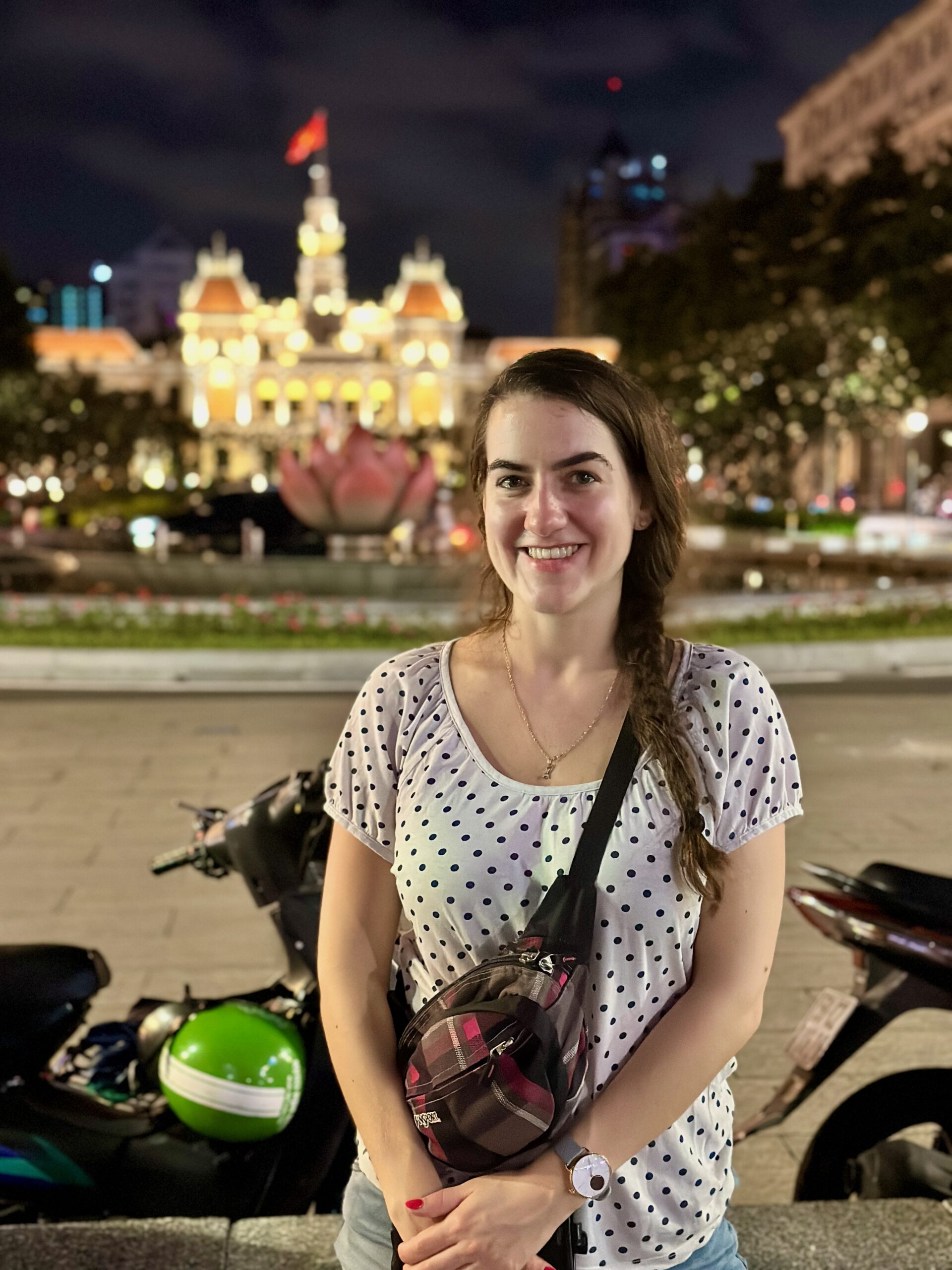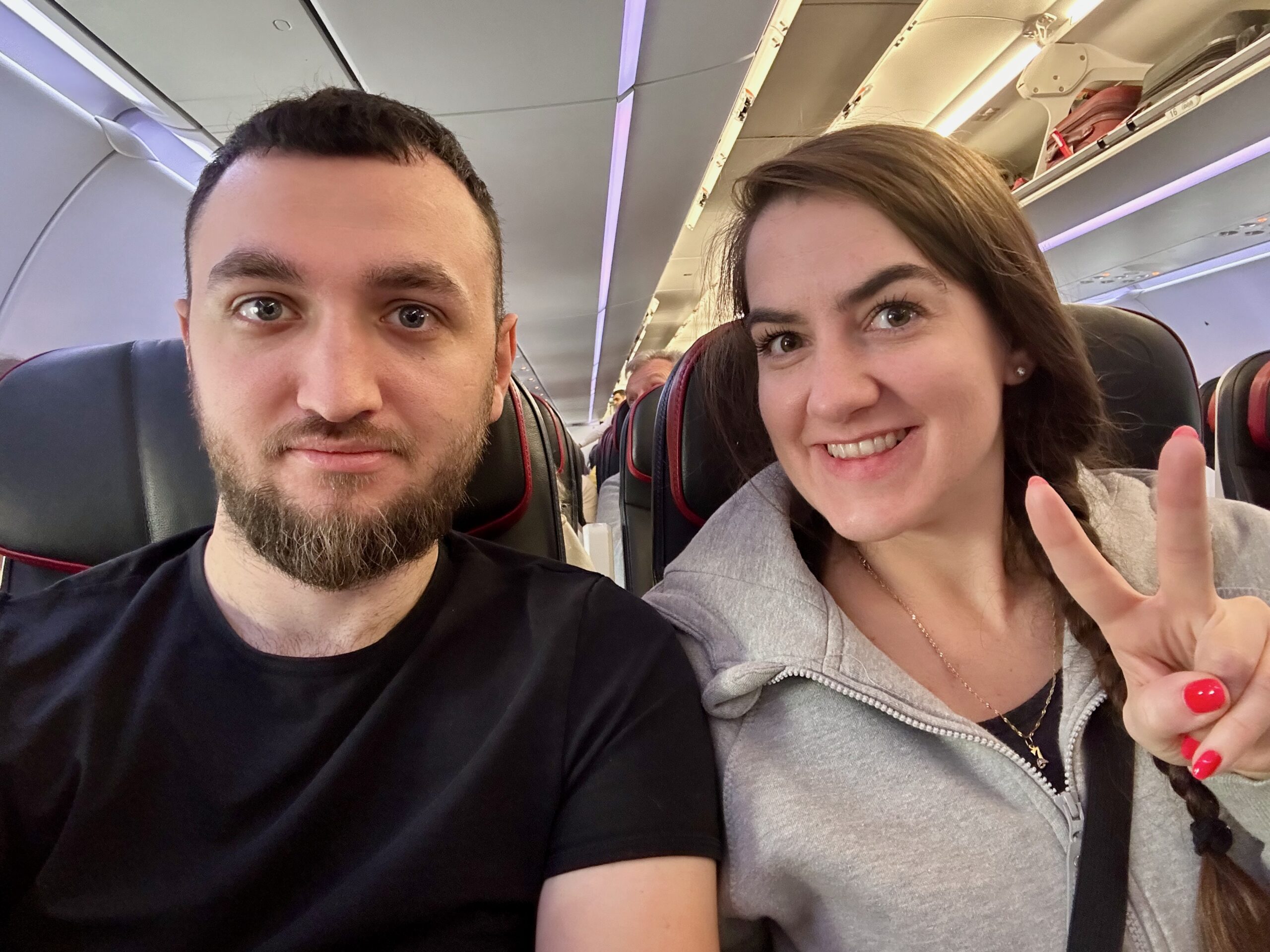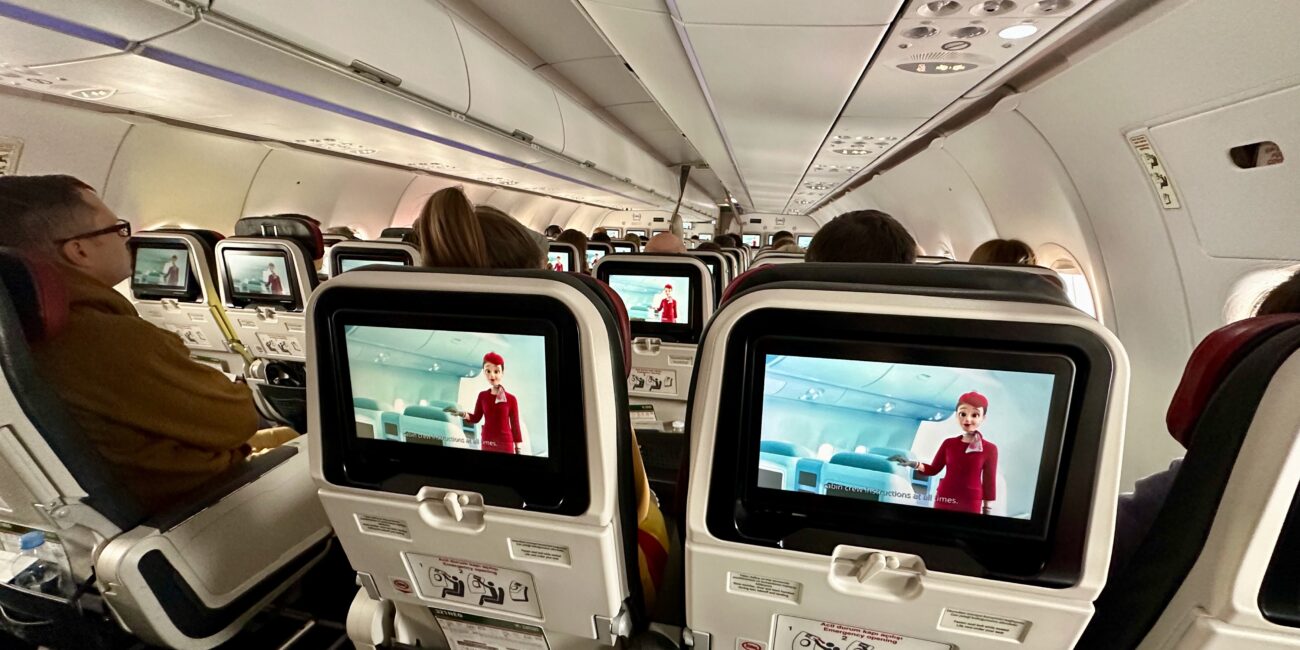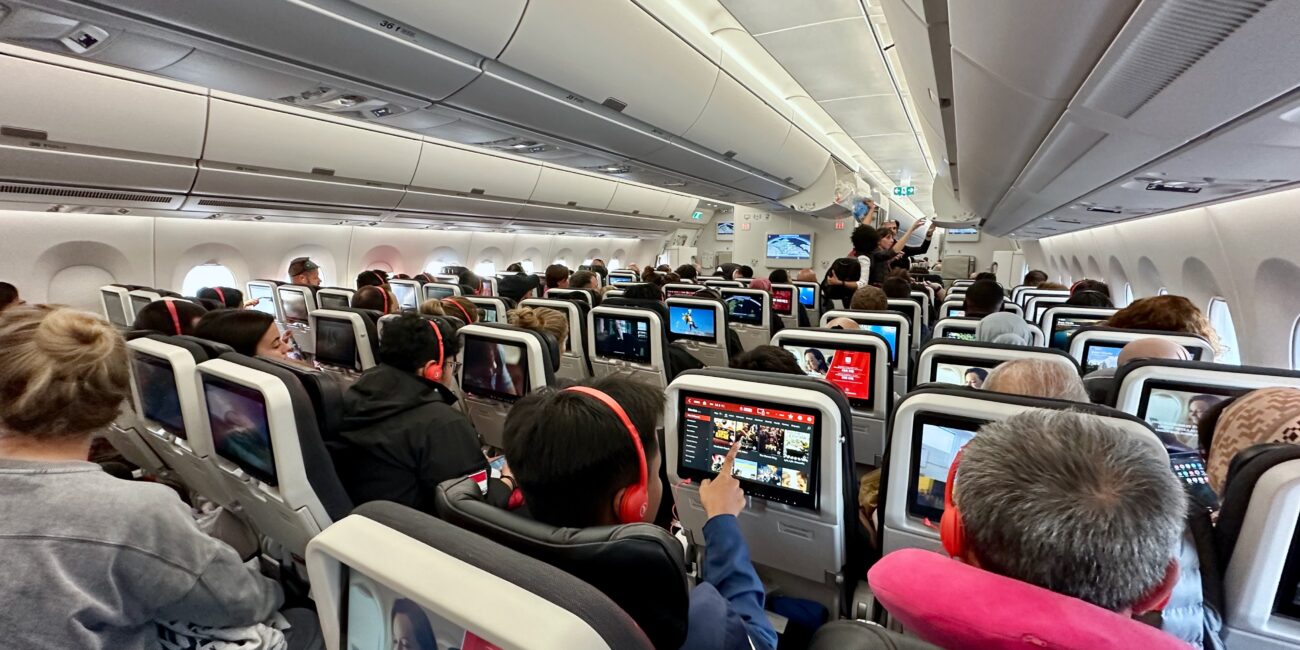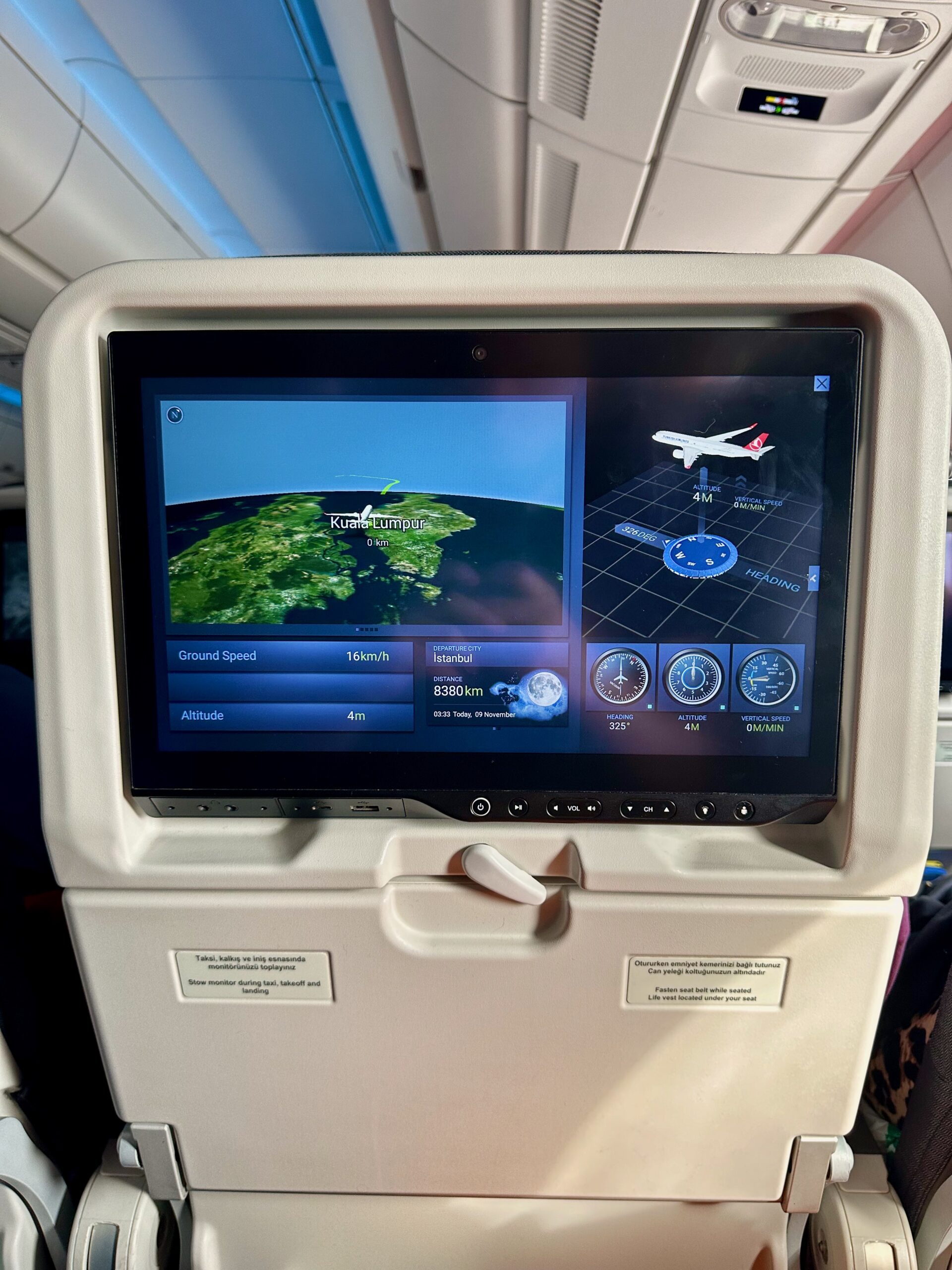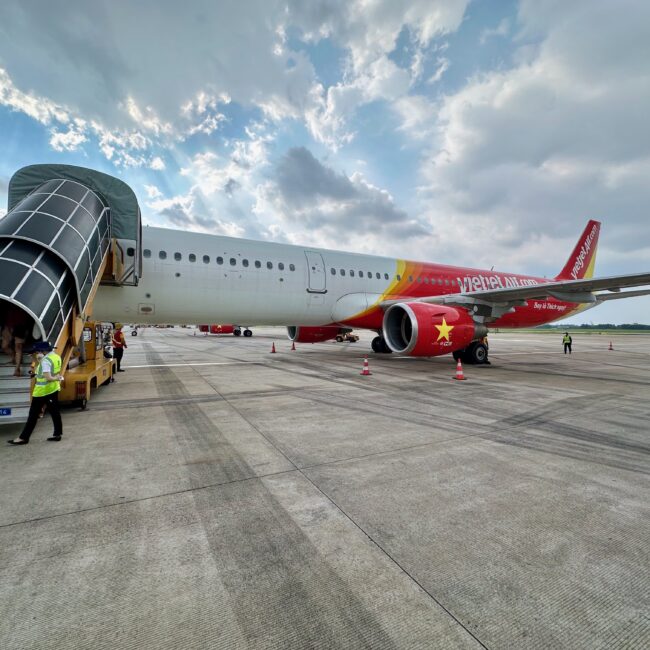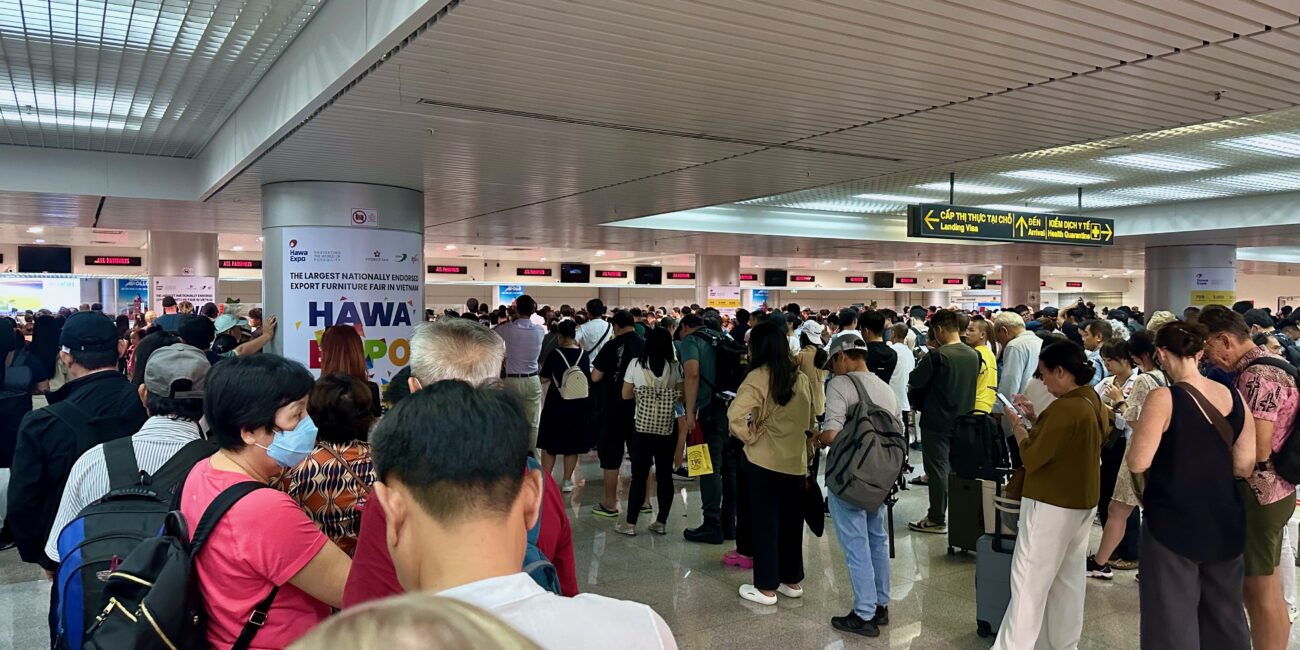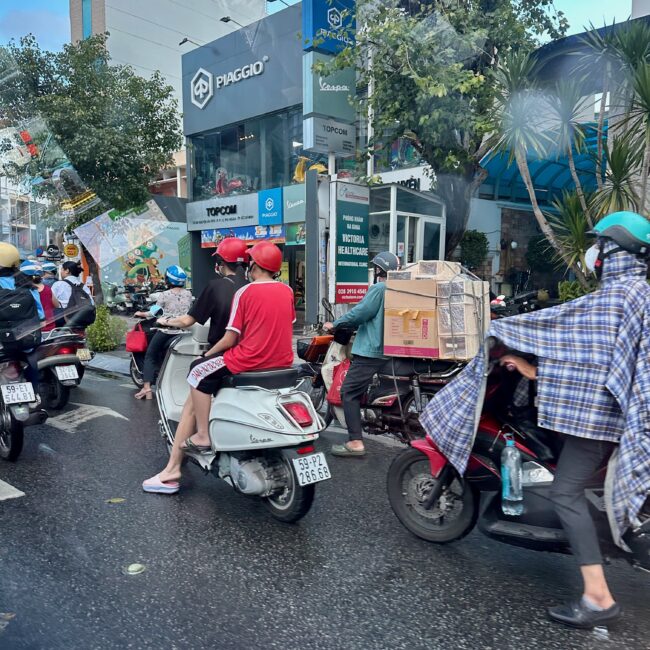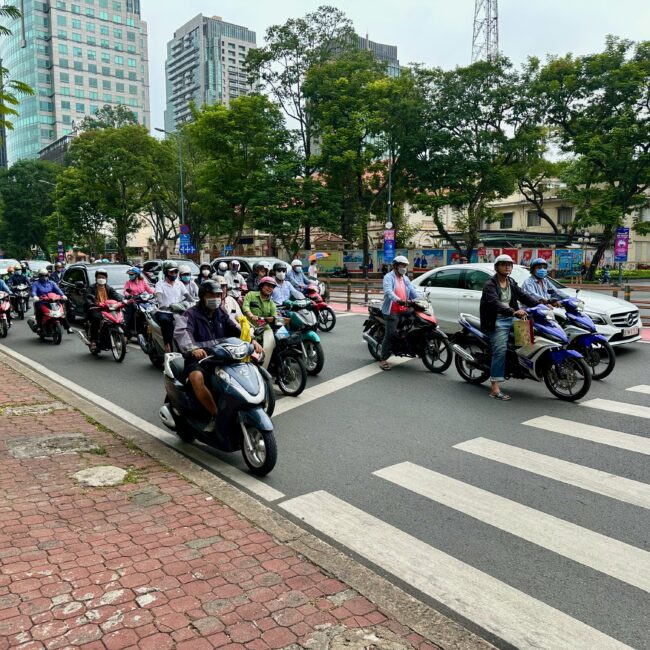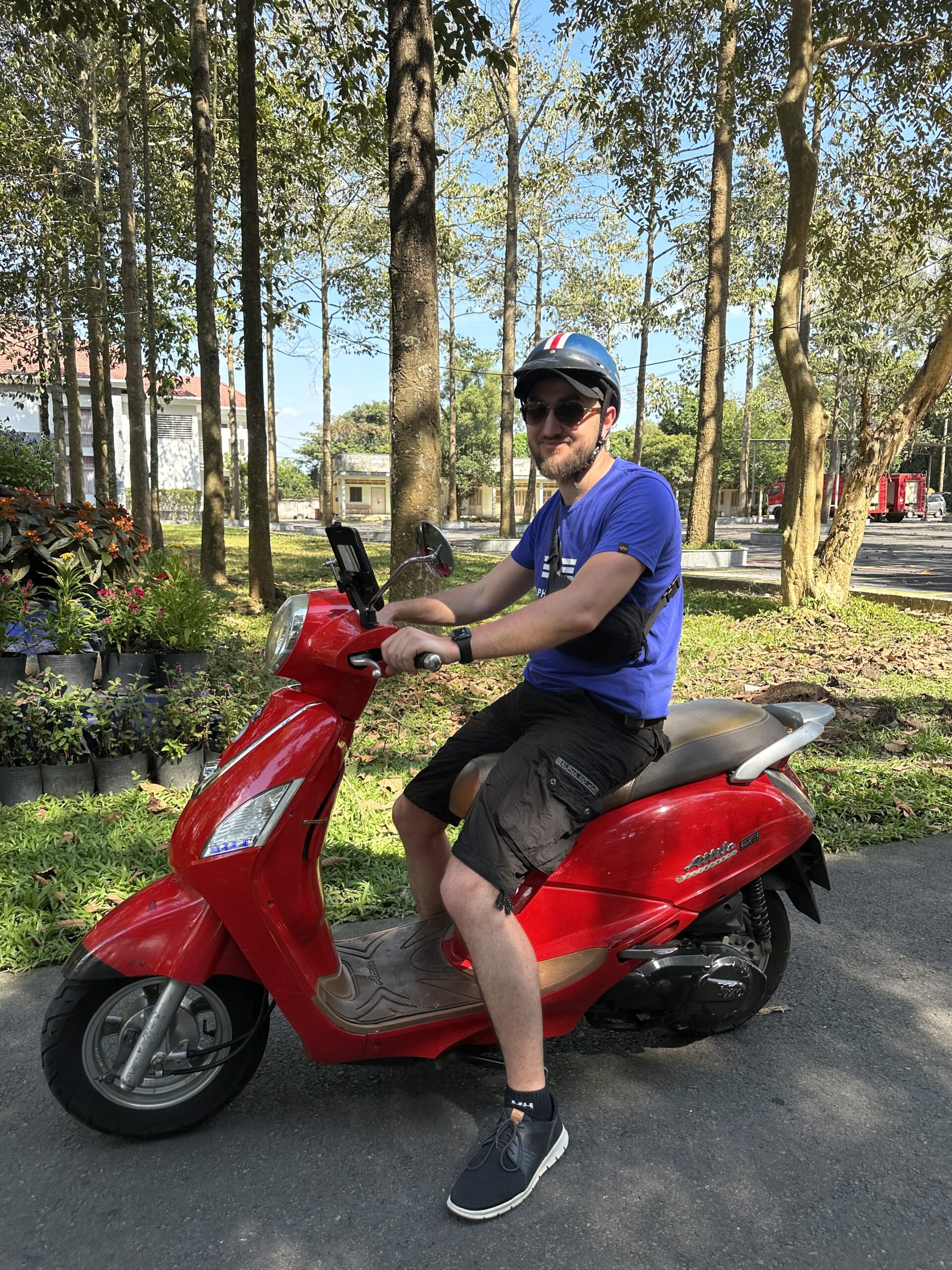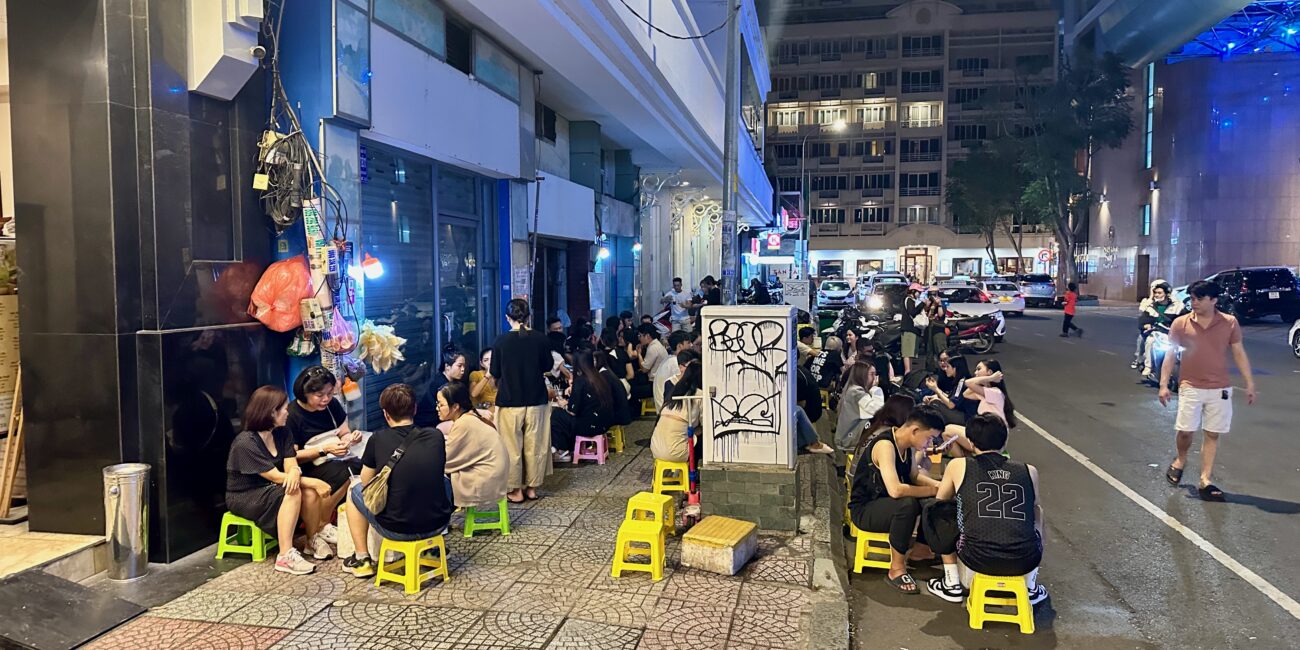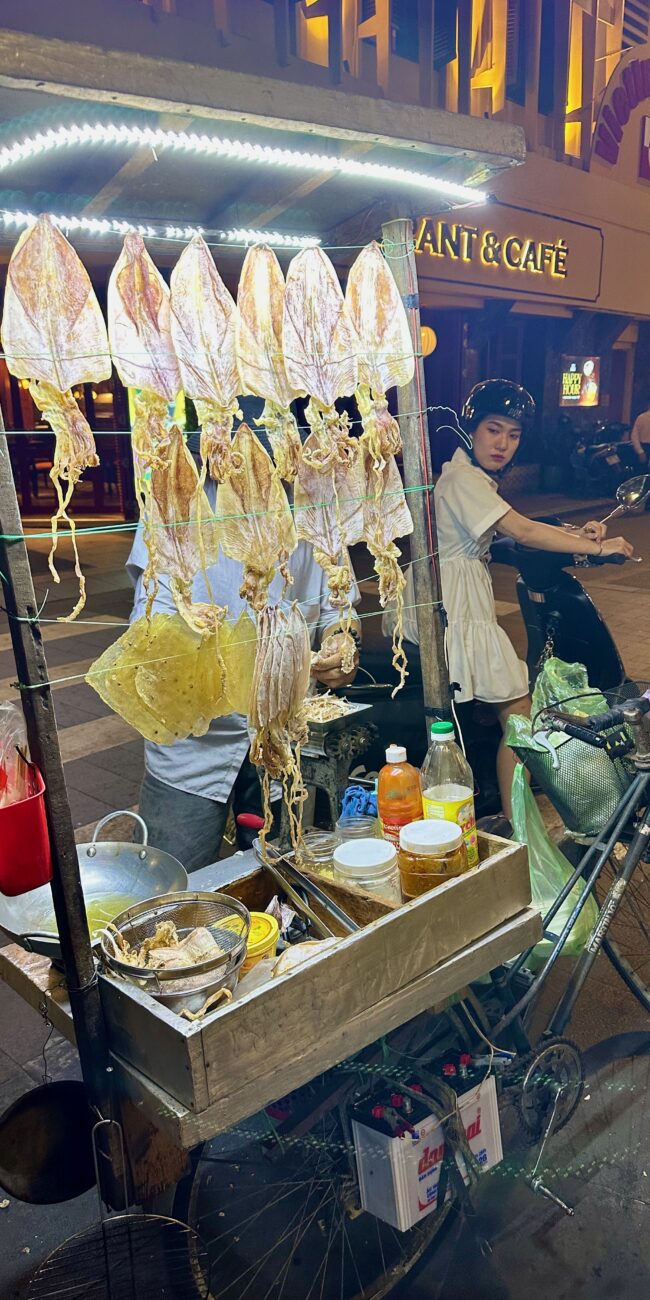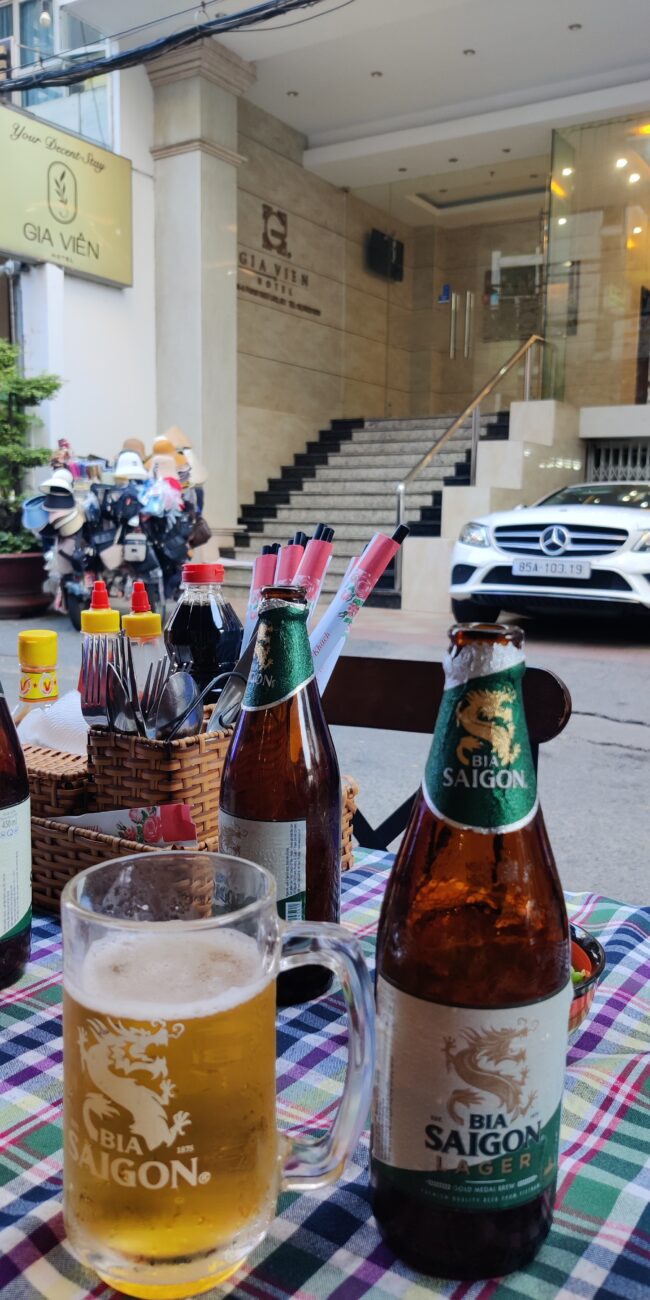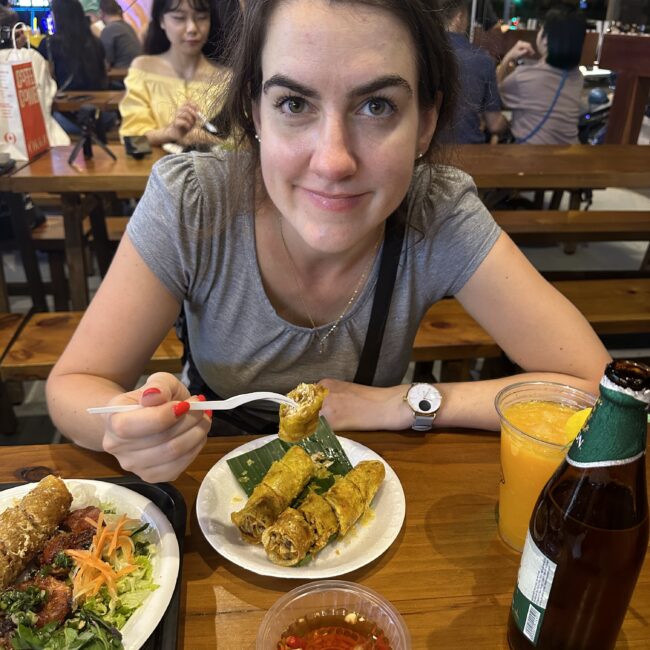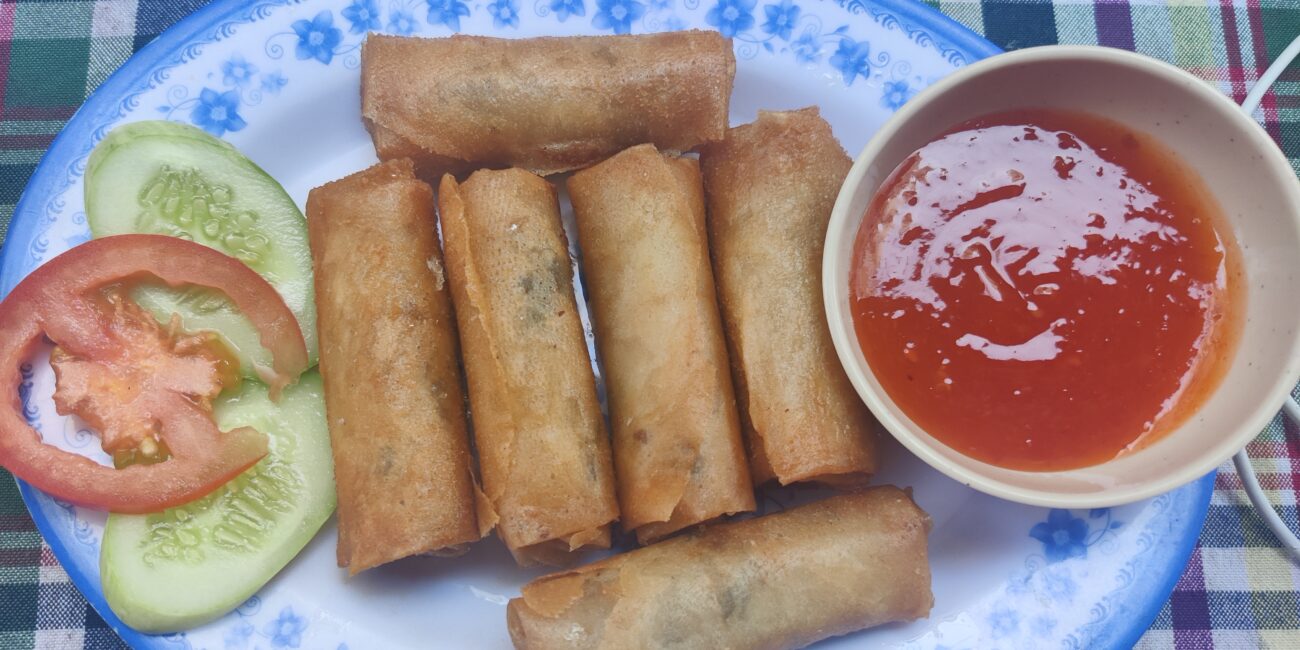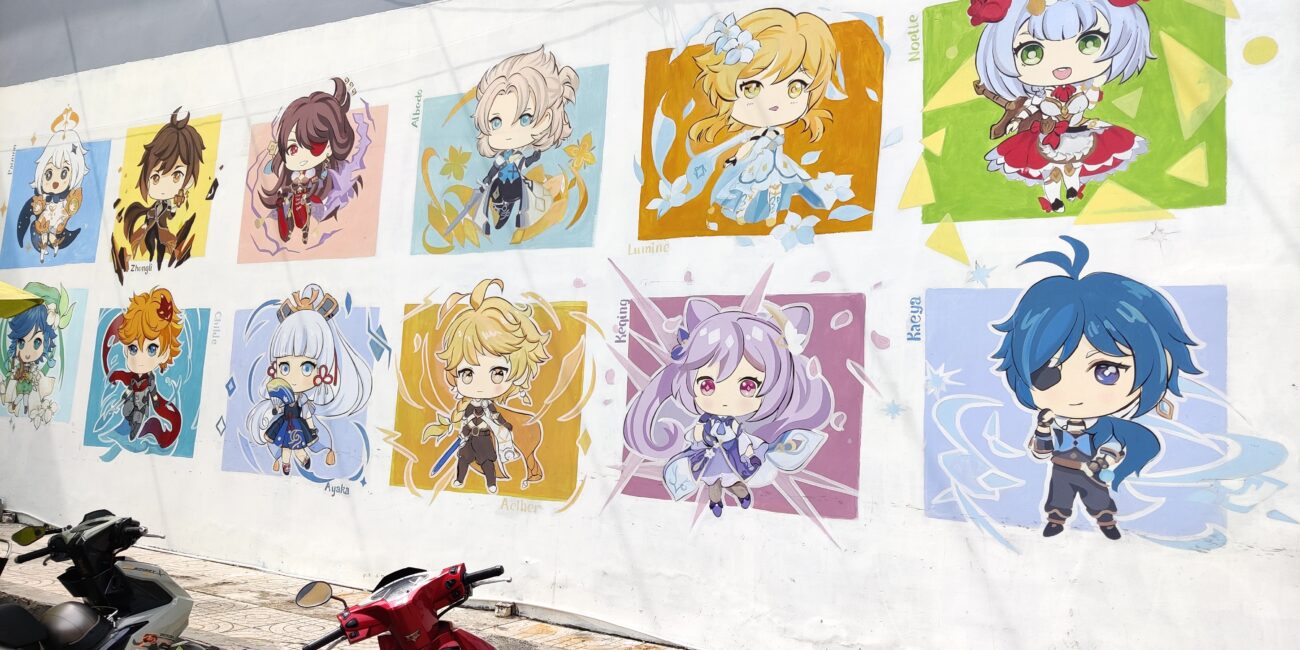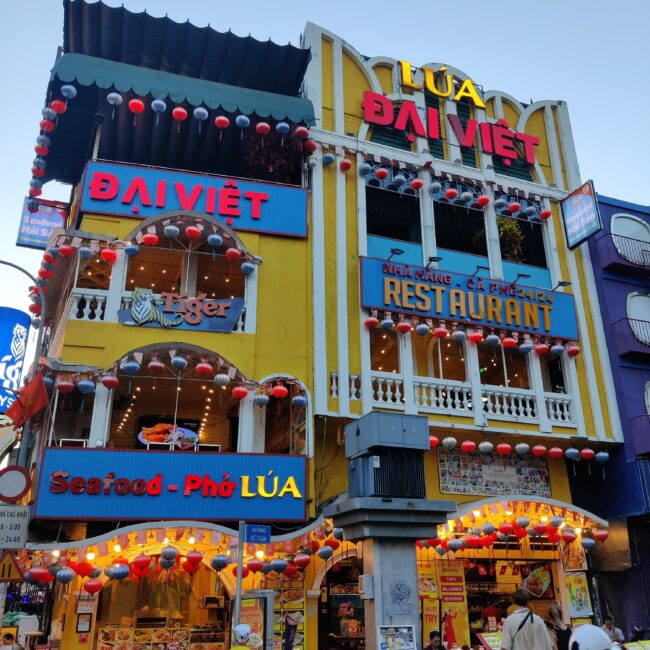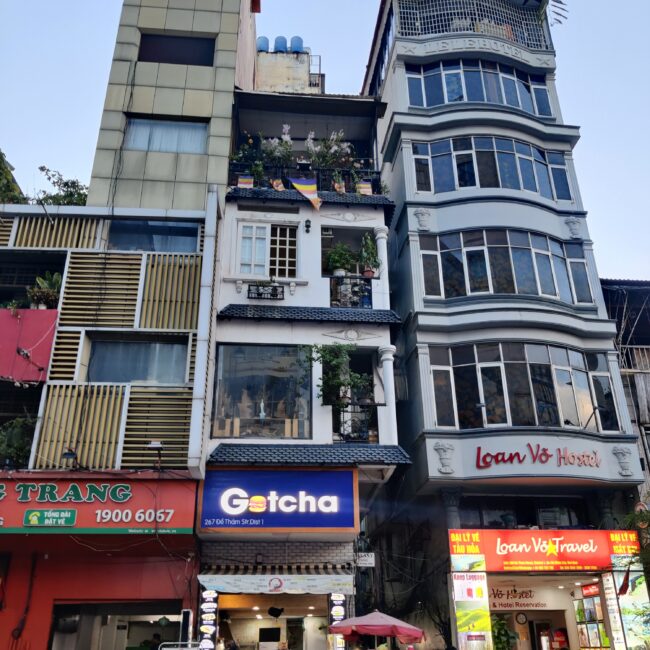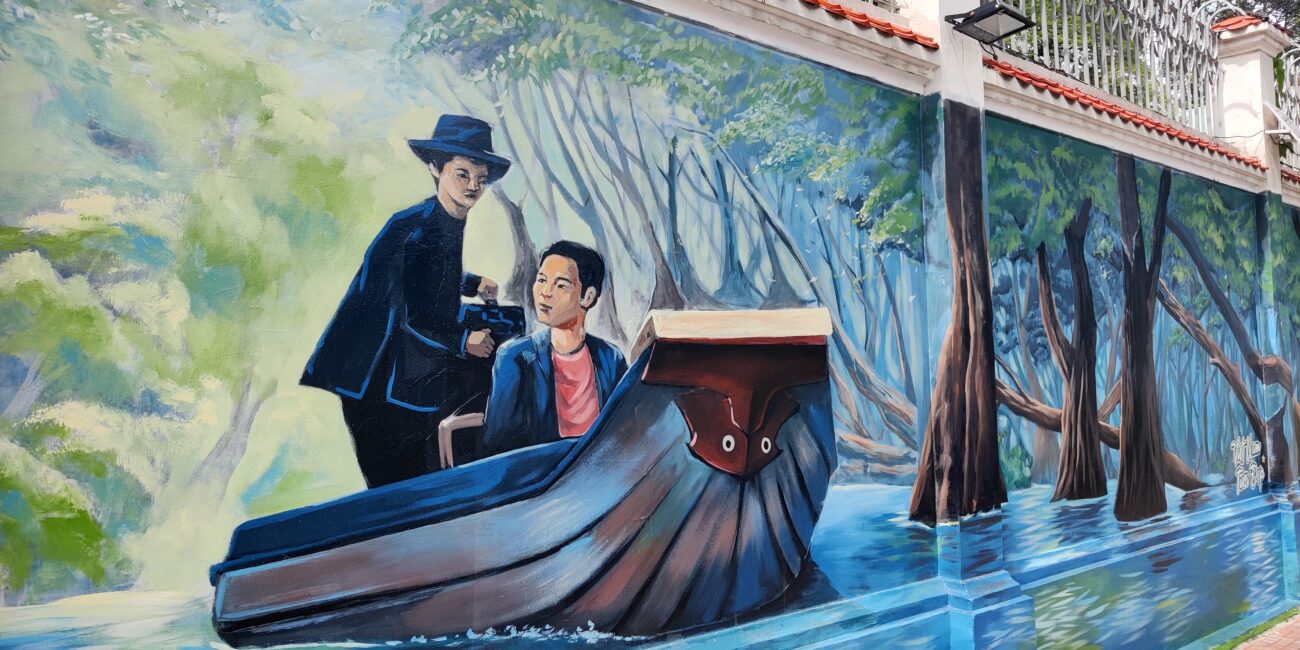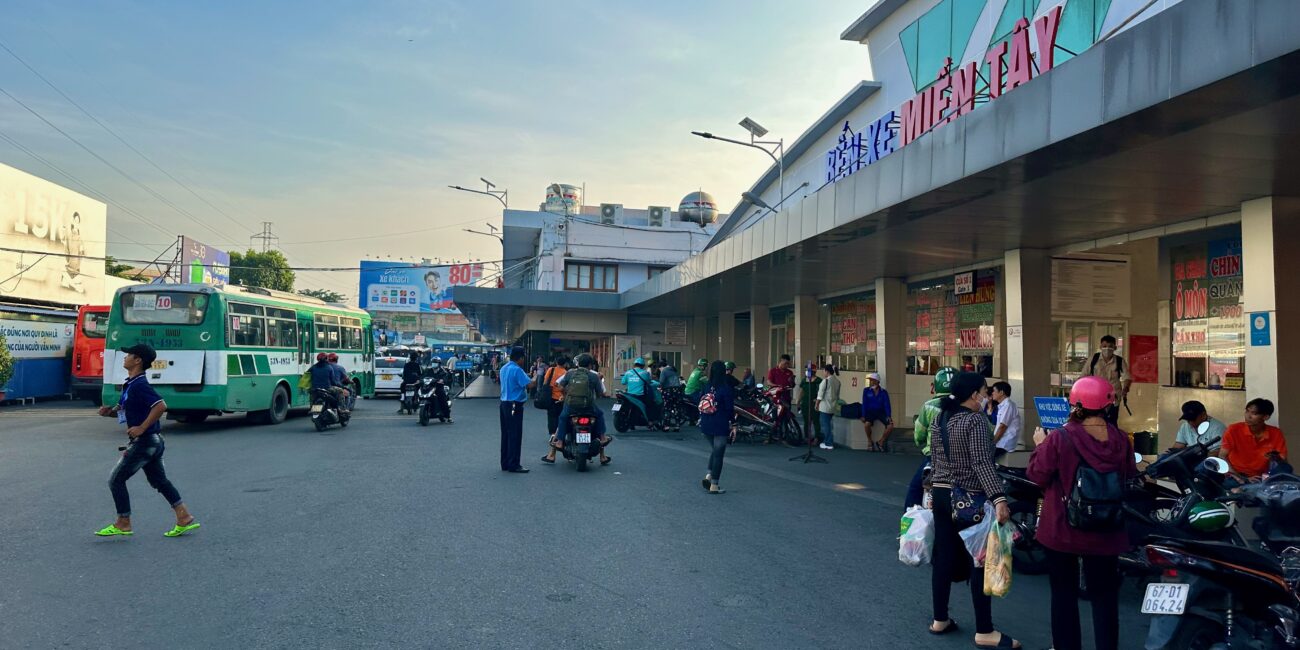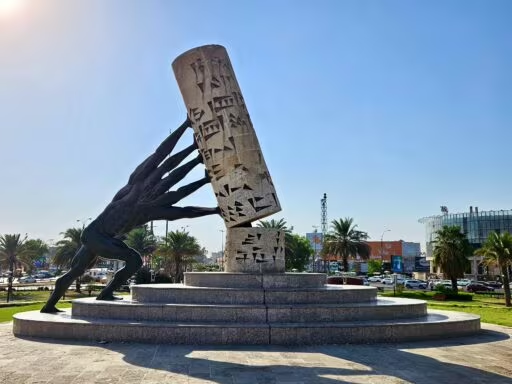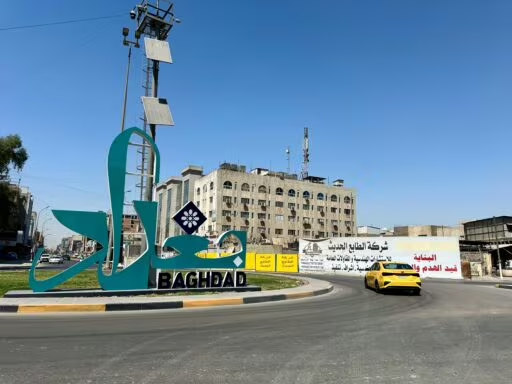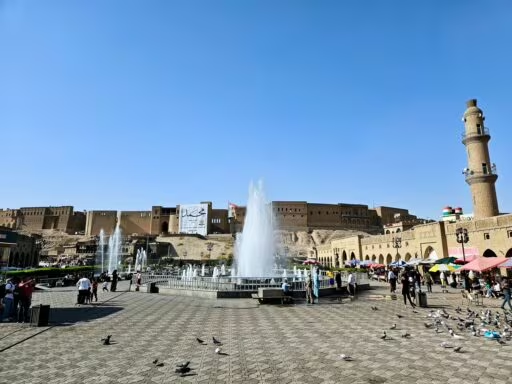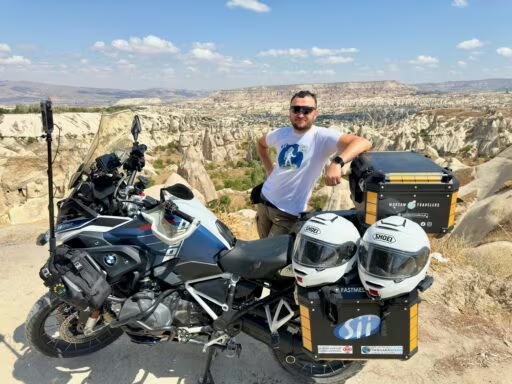This post is also available in:
Polski
Hello! 👋
This time, we’re taking you to 🇻🇳 Vietnam – specifically to Ho Chi Minh City, where our journey began in November 2023. We spent almost a month in Vietnam, trying to see as much as possible without rushing. Our goal was to experience the country as it truly is – without sugarcoating or overplanning.
This post is also a summary of the past few months on our blog. We’ve finally gathered all the information to share with you – honestly and without embellishments, but packed with practical tips that might come in handy for your own travels.
Our Vietnam journey is divided into five parts to make it easier to cover all the places we visited. We’re starting with Ho Chi Minh – a city that greeted us with chaos, street noise, and a unique atmosphere. This is where we took our first steps on Vietnamese soil and began learning how to navigate this new world.
We’ll be talking about landmarks, food, the chaotic street traffic, and all the things that surprised us. We invite you to read more!
Procedures and requirements
Before entering Vietnam, obtaining a visa is mandatory. This process can be conveniently completed online through the official government website at evisa.gov.vn. Be sure to submit visa applications only through official sources to avoid potential scams or extra fees charged by intermediaries.
To avoid any issues, it’s advisable not to leave this process until the last minute, as visa applications can take 3 to 5 business days to be processed.
Make sure all the information matches your identification document, as even minor errors can lead to application rejection or issues at the border. The visa fee is $25 for a single-entry visa and $50 for a multiple-entry visa. Payment is made online during the application process.
How did we get to Vietnam?
Our journey to Vietnam wasn’t direct and required several layovers. While this option can be tiring, it helped us save a significant amount of money—funds we could later spend on exploring and sightseeing.
Departure from Warsaw
We bought our tickets to Asia during a promotion on the Turkish Airlines website. Initially, we planned to fly from Kraków to Kuala Lumpur, but after some minor schedule changes, we managed to rebook our tickets—at no extra cost—for a flight from Warsaw with a layover in Istanbul. The total cost was around 2300 PLN per person, including checked baggage.
Since our final destination with Turkish Airlines was Malaysia, we also had to comply with Malaysian visa regulations. This was an additional detail we needed to consider while planning the entire trip.
Our departure from Warsaw went smoothly. We flew on a narrow-body aircraft that looked like it had just undergone a recent upgrade. The interior was modern, clean, and made a great impression. The flight lasted about 2.5 hours, which was short but enough to relax a bit before the next leg of our journey.
Transit in Istanbul and flight to Kuala Lumpur
After landing in Istanbul, we had about a four-hour layover before our next flight. We used this time to grab a meal and enjoy a coffee at Starbucks, getting ready for the next leg of our journey.
Opened in 2018, Istanbul Airport is one of the largest in the world, initially designed to handle 90 million passengers annually, with plans to expand its capacity to 200 million. Its modern infrastructure and vast spaces might feel similar to the long walks experienced at Dubai Airport (DXB).
The flight from Istanbul to Kuala Lumpur takes approximately 10 hours and 5 minutes. We spent most of that time resting and watching a few episodes of “ER”. Thanks to this, the journey felt quick and comfortable.
Coffee at the airport and a connecting flight in Malaysia
Despite feeling tired, I was pretty excited to get another stamp in my passport—even if it was just for a short while. Those stamps always look cool!
The line for passport control took a little while, but everything went smoothly. The officer asked about the purpose of our visit and how long we’d be staying. We explained that we were just passing through for a few hours before our next flight to Vietnam. Passports checked, stamp added—ready to move on!
We had some time for coffee and food before dealing with our luggage. Since our flight to Ho Chi Minh City was with a different airline—VietJet Air—we had to leave the transit area, collect our bags, and check them in again.
We had a bit of a stressful moment along the way. I accidentally mixed up the order of our first and last names when booking the tickets. VietJet Air wanted $50 to fix it. We decided to take the risk, and luckily, no one even noticed the mistake at check-in—so it all worked out without any issues.
It’s a good lesson—always double-check your tickets because the stress really wasn’t worth it. The flight to Ho Chi Minh City flew by—literally. We passed out right after takeoff and woke up just as we were landing. But what happened next? We’ll tell you all about it in the next part!
We have arrived in Ho Chi Minh City
Fatigue was starting to catch up with us. After check-in, we boarded the plane, and before it even fully took off, we were both already fast asleep.
After a long journey, we finally landed in Vietnam. Instead of using a jet bridge, we were transported to the terminal by bus. Immigration control went smoothly—our visas were checked without any issues, so we were able to move on quickly.
Public transportation in HCMC can be a bit tricky. The system operates in a somewhat unique way, and dragging suitcases around on foot wasn’t exactly appealing—especially since sidewalks are often narrow, crowded, or suddenly disappear when you least expect it.
So, we decided to order a Grab—an Asian equivalent of Uber that works seamlessly here. The app makes it easy to book a ride, and payments are cashless—you just link your card, and you’re good to go.
Traffic conditions
Well, let’s just say—things on the roads here are different. Very different. If you’re expecting the order of European streets or even the controlled chaos of the Middle East, think again. Vietnam has its own unique style of traffic that, at first glance, might seem like complete madness.
We’ll do our best to shed some light on this and give you a glimpse of what everyday life on the streets of Ho Chi Minh looks like—so you can be prepared, or at least mentally brace yourself for the experience.
Let’s start with what stands out the most—traffic, scooters, honking, and rules that don’t always resemble those found in driving manuals.
Car rental in Vietnam
If you’re considering renting a car in Vietnam, let me say this upfront—it’s possible, but you need to be well-prepared. This is definitely not a place for inexperienced drivers, especially if you haven’t navigated the chaotic traffic typical of Asian roads before.
Most car rental companies in Vietnam primarily offer vehicles with a driver. Locals are well aware that navigating the roads here can be quite a challenge, so renting a car with a chauffeur—someone who knows the local rules (or lack thereof)—is often the preferred option.
There are, however, rental companies that offer cars without a driver. To rent one, you’ll need an 🪪 International Driving Permit (IDP) issued under the 1968 Vienna Convention or obtain a temporary Vietnamese driver’s license.
Is it worth it? If you don’t have experience driving in challenging conditions or simply prefer to avoid road stress, renting a car might end up being more of a hassle than a convenience. We decided to skip it after a quick analysis and opted for other, more practical options—which we’ll cover later in this post.
Traffic regulations and reality
Traffic laws in Ho Chi Minh City do technically exist—there are speed limits, road signs, and traffic lights. However, in practice, the flow of traffic operates on a completely different system—one that relies more on instinct and improvisation than strict adherence to rules.
Speed limits? On paper, it’s 30–40 km/h in cities and up to 60 km/h outside urban areas. In reality, with the constant swarm of scooters and cars, reaching those speeds can be a challenge. Drivers tend to adjust their pace to the flow of traffic, and road signs often feel more like suggestions than strict rules.
Parking follows a similar pattern. In theory, there are rules, but in practice, cars often end up wherever there’s space—on sidewalks, by curbs, or even partially blocking traffic lanes. And, honestly, no one seems too bothered by it.
When it comes to traffic lights, things can be pretty flexible. Red light? It depends. If there’s no police around, many drivers treat it more as a suggestion to slow down rather than a strict order to stop. But the moment officers are present, the traffic suddenly becomes much more organized.
Pedestrians on the road
It’s not easy for pedestrians either. Crosswalks do exist, but crossing the street often feels like navigating an obstacle course. You have to step onto the road with confidence and keep walking at a steady pace, trusting that scooters and cars will weave around you without stopping. And surprisingly—it usually works!
The whole scene might look chaotic, but it has its own rhythm that locals are completely used to. For outsiders, it can be quite a challenge, so it’s best to approach it with plenty of patience—or simply let someone else do the driving.
How did we move around the city?
Traffic like this doesn’t scare me anymore—thanks to previous trips, I’ve gained some experience. So, we decided to rent a scooter for two days. For me, it felt like business as usual, but for Jadzia, who was riding this way for the first time, it was a completely new experience. A mix of adrenaline and fun—overall, a great adventure!
If you’re planning to rent a scooter in Vietnam, stay alert. We’ll share all the details in a separate post, but here are a few key tips right now:
- Never leave your passport as collateral. Provide a copy of your document or leave a cash deposit. Your passport should always stay with you.
- Take photos and a video of the scooter before you ride. Focus on scratches, cracks, and damage to avoid surprises when returning it.
- Check the scooter’s condition—lights, horn, and brakes are essential. Scooters in Vietnam are often heavily used, so it’s best to verify everything works.
We ended up with a scooter that had electrical issues. When we returned it, the owner tried to blame us for the damage. We calmly explained that we received the scooter that way, and it was his responsibility for renting out poorly maintained equipment. In the end, we sorted things out, but the owner was clearly not pleased.
Why the scooter?
A scooter is probably the fastest and most convenient way to get around HCMC. Taxis and Grab are fine, but during rush hours, you’re likely to get stuck in traffic for a while. A scooter lets you weave through every corner of the city, but you need to feel confident navigating this kind of chaotic traffic.
Public transport
Public transportation
Ho Chi Minh City has an extensive bus network with around 152 routes covering various parts of the city and its suburbs. Ticket prices range from 3,000 to 10,000 VND, depending on the distance. Payments are typically made directly to the driver when boarding—so it’s best to have the exact amount ready.
Although buses are an affordable way to get around, their quality and comfort might not match what you’re used to in other countries. Vehicles can get crowded, especially during rush hours, and most signs and schedules at bus stops are only in Vietnamese, which can be challenging for tourists. On top of that, punctuality and frequency can be unpredictable, so using buses often requires patience and flexibility.
Passenger transportation in Ho Chi Minh
In HCMC, one of the most popular ways to get around is Grab—the local version of Uber. It works similarly—you book a ride through the app, choose your option (car or scooter), and you’re ready to go.
What about safety? Well, as the saying goes—one rabbi says yes, another rabbi says no. Most people praise Grab for its convenience and transparency. You get a fixed price upfront, can track the route in the app, and pay either by card or cash. That said, it’s always smart to stay alert. Double-check that the car or scooter matches the details in the app. If something feels off, it’s better to cancel and book another ride—there’s no shortage of drivers here.
Subway
During our stay in Vietnam, the metro in Ho Chi Minh City was not yet open to the public. However, according to the latest information, the first metro line (Line 1) was officially inaugurated on December 22, 2024.
Line 1 is 19.7 kilometers long and includes 14 stations—three underground (Bến Thành, Opera House, and Ba Son) and 11 elevated. Trains on this line can carry up to 930 passengers, with 147 seats and 783 standing spots.
It’s also worth mentioning that from December 22, 2024, to January 21, 2025, metro rides are free of charge for all passengers. This initiative aims to encourage both locals and tourists to start using the new mode of transportation.
Accommodation
During our stay in Ho Chi Minh City, we stayed at the Aristo Saigon Hotel, which we booked through Agoda. The hotel is located in the city center, in District 3, close to major tourist attractions.
The hotel itself was fairly modest—nothing particularly impressive, but also nothing to complain about. The rooms were clean and average in terms of decor. The bathroom was stocked with basic toiletries, and cleaning was done regularly, so in that regard, everything was just fine.
Breakfast? We tried it once and decided that was enough. It was pretty average, so for the rest of our mornings, we opted for coffee at nearby cafés instead. Service? No complaints here—helpful and friendly staff.
SIM card
During our stay in Vietnam, we decided to purchase local SIM cards at the airport right after landing. Before the trip, we checked opinions in groups of Polish travelers and expats living in Vietnam to choose the best provider. In the end, we went with Mobifone—I opted for an eSIM, while Jadzia chose a physical SIM card.
Looking back, we realized that Viettel Mobile might have been a better choice, as it offers wider coverage across Vietnam. In Ho Chi Minh and nearby areas, we experienced some signal issues, especially outside the city center, where network access was more limited. It’s also worth noting that 5G technology in Vietnam is still in the development phase and isn’t widely available yet.
When it comes to purchasing an eSIM through apps before your trip, we wouldn’t recommend it due to the higher costs. It’s much better to get a local SIM card upon arrival.
Wi-Fi Calling
Wi-Fi Calling is a really useful feature, especially during international trips—and Vietnam is no exception. It allows you to make calls and send SMS messages using your home network rates, as long as the connection goes through the internet rather than local GSM providers.
In practice, this means that when you’re connected to Wi-Fi—for example, in a hotel or café—your phone can use Wi-Fi Calling to connect with your Polish operator. The key is to check that your operator’s name appears on the status bar with the label Wi-Fi Calling.
Food
We could easily dedicate an entire chapter to Vietnamese cuisine—and we probably will—because every region served something different. In Ho Chi Minh, we had no trouble finding something to eat, although you need to be prepared for flavors that are completely different from what you might know from “Vietnamese” restaurants back home.
We were hoping for something familiar, but we were quickly surprised—here, the food is authentic and deeply local. Street food is a paradise for those who love bold flavors. Seafood takes center stage—everything from crabs and shrimp to things you might not even want to ask about. It’s all fresh, straight off the grill or out of the pot.
But that’s not all. Vietnam is famous for classics like Bánh mì—crispy baguettes filled with meat, vegetables, and pâté—and Phở, a flavorful noodle soup that’s perfect for a quick recharge. Vegetarians won’t feel left out either, as street stalls offer plenty of options based on tofu and rice noodles.
If you’re a bit picky and prefer your chicken to look “presentable”, you might be in for a surprise—here, nothing goes to waste. Fortunately, fast food options like McDonald’s and KFC are also available if you need a quick and familiar bite.
To sum up—it’s tasty, bizzare, and sometimes surprising. Give yourself a moment to get used to the local cooking style, and then feel free to try it all!
Exchange office or ATM?
In Vietnam, we expected cash to be king—both of us had previous experience with Asian countries, so we knew what to expect. This time was no different. Cash is definitely essential here, although more and more places are starting to accept card payments.
Before the trip, we did quite a bit of research about currency exchange offices and where to find the best rates. But, as it often happens, reality quickly adjusted our plans. Instead of wasting time hunting for the perfect exchange spot, we opted for ATM withdrawals—and it turned out to be a great decision.
Not all ATMs are fee-free, so it’s worth keeping an eye on that. We used the purple VPBank ATMs, which didn’t charge any extra fees. We also tried to withdraw smaller amounts, just enough for each stage of our trip, rather than carrying large sums of cash around.
For a trip this far from home, it’s always a good idea to carry more than one card, just in case—your bank might block a transaction, or your card could get lost or stolen.
Climate and weather conditions
Southern Vietnam, including Ho Chi Minh City, has a tropical climate. It’s warm all year round, with temperatures rarely dropping below 25°C (77°F). The weather is divided into two main seasons—dry and wet. We visited in November, which marks the beginning of the dry season. The weather was mostly stable and sunny, although the humidity could still be quite noticeable at times.
It’s also worth mentioning that air conditioning is practically everywhere here. However, you need to be careful with sudden temperature changes, as it’s easy to catch a cold. We experienced this firsthand—after spending a day in air-conditioned spaces, Jadzia started feeling unwell, and we had to take a forced break from sightseeing. So if you’re planning a longer stay, it’s better not to overdo it with the cooling.
Safety
In terms of safety, Ho Chi Minh City feels quite secure, although, as always, it’s important to use common sense. We didn’t encounter any dangerous situations, but petty theft can happen—especially in crowded areas, markets, or near tourist attractions. We mostly carried our backpacks in front and kept our phones hidden, as we had heard stories about thieves on scooters snatching bags or phones and speeding off before anyone could react.
A bigger hazard than pickpockets here is definitely the traffic. Crossing the street is an art you’ll need to learn. In theory, there are crosswalks, but in practice—no one pays attention to them. The best strategy? Simply step onto the street slowly and confidently, keep moving at a steady pace, and don’t stop or step back. Somehow, scooter drivers will adjust and swerve around you. Sounds terrifying? Maybe a little at first, but after a few days, it starts to feel almost natural.
And then there were the rats. Yes, they were there—especially around markets and in narrow alleys, where street life goes on until late at night. I’m not a fan of these rodents, and I won’t lie—I had a few moments of discomfort when they got a little too close for comfort. Jadzia, on the other hand, found it hilarious and couldn’t stop laughing whenever I tried to avoid them.
Places we were able to see
During our action-packed days in Ho Chi Minh City, we managed to visit plenty of interesting places 🚶♂️🛵. We also took a short trip outside the city to explore the famous Cu Chi Tunnels—a historic site that left a lasting impression on us.
A lot of our time was spent on a scooter, exploring the city from all angles to get a true sense of everyday life. 🚦 In addition, we enjoyed many long walks—we love experiencing a city from the street level, as it’s the best way to immerse ourselves in its atmosphere.
Unfortunately, we had to skip one day due to Jadzia’s illness 🤒—well, these things happen, and it’s a good reminder that not every trip goes exactly as planned. We had hoped to visit the Mekong Delta 🌿, but we had to save that adventure for another time.
We’ll share more details about what we managed to see in Ho Chi Minh and the surrounding areas in a separate post – 👉 click here.
We pack our bags and continue on our way
Our next destination was Da Lat – a picturesque city located in the Annamite Mountains in southern Vietnam, at an altitude of about 1500 meters above sea level. With its unique climate and charm, it’s often referred to as the “City of Eternal Spring”.
After analyzing different transportation options, we decided to go with a sleeper bus. In Vietnam, it’s common to have buses equipped with beds instead of standard seats, which provides comfort during longer journeys. We bought our tickets from FUTA Bus Lines.
We’ll cover how to get around between towns in Vietnam in a separate post. In the meantime, join us for the second part of our adventure! 🗺️ ✨

